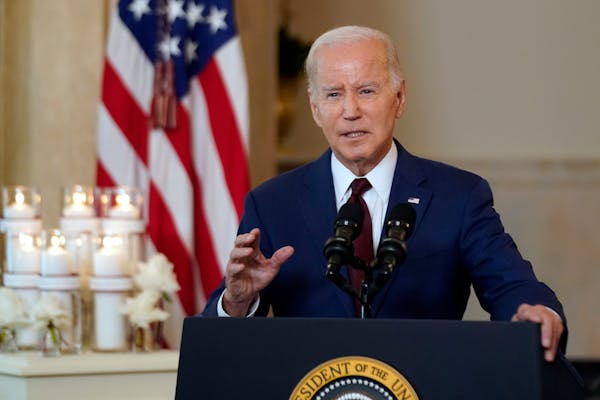Roses in hand, a group of high school students from California walked solemnly through George Floyd Square on Thursday morning. They took care as they stepped over mementos, led by guides and their instructors, who brought them to see what happened in Minneapolis three years ago.
Teacher Amy Hunt brought the 11th-graders from the Bay Area Nueva School to Minneapolis to give them a first-hand look at the scene of Floyd's killing — and the resulting community resolve to seek racial justice — as part of their American Studies education. They had a lot to see on Thursday, the third anniversary of Floyd's death.
In the years since Floyd was murdered by Minneapolis police on May 25, 2020, the intersection of 38th Street and Chicago Avenue remains a center for learning — even without the formal structure some community members want.
Floyd was killed right before members of the visiting class started high school, and his death shifted history and their curriculum, student Alyse Graham-Martínez said.
"We've all seen this street on the news. But to actually be here, especially when there's so many news people and people here who are remembering him, it's a lot," Graham-Martínez said.
People from as far as California and New York visited Thursday to look at the posters and other offerings. Gardeners worked on raised beds and others stepped into the Black-owned Onyx Coffeehouse for a latte, where poetry and leaflets about the racial justice movement decorate many tables.
The fact that local residents call a visit to the square a "pilgrimage" and not a tourist destination was really important, said Hunt, a St. Louis Park native.
"This is about understanding this story that's happening here," Hunt said of her students.
A steady flow of visitors stopped into an exhibit called the Movement Never Stops by independent photographer KingDemetrius Pendleton in the afternoon. People were led through three years of modern history by volunteer AJ Bantley, who has only missed a single weekend of working there in the last year.
It can be challenging to recount her own experiences at protests, she said. Bantley cried as she spoke to visitors about protest images covering the walls.
"If it ever gets to the point where it becomes automatic, then I'm not here for the right reasons," she said. "If it's ever robotic, then I'm not doing any good."
She said it's an honor to be entrusted with Pendleton's display, which she balances with two jobs. It worries her when out-of-towners — and those living much closer to the intersection — come to the square without anyone to guide them.
By early evening, about 200 people had gathered at the square for several planned events. Many were from outside of the Twin Cities, some from out of state.
Taylor Jones, a 24-year-old from Medina, said he has visited the memorial several times. As a Black person, Jones said he's experienced disparities and unequal treatment his whole life.
He said it's been difficult to still see high-profile killings of Black people three years after Floyd's murder.
"It's tough, because it feels like we still have a lot of these incidents, despite it being three years later," Jones said.
Joe Brown, a 30-year-old from Chicago, said he wanted to come to see the numerous art displays, murals and tributes placed at the square.
"It's a part of history, and I think everybody needs to learn about it, and that police take it too far," Brown said. "Sometimes when people say they can't breathe, it isn't because they're trying to get away or escape. They really can't breathe and the police are overdoing it."
A block away from the square, a procession began with around 30 people marching through Say Their Names cemetery, where hundreds of plastic tombstones are placed with the names of Black people killed by police. The procession was led by the Ananya Dance Theatre, a St. Paul dance ensemble consisting of women of color.
Others at the square began picking petals off of roses to distribute in the street, and handed out candles for the vigil.

Want to share info with the Star Tribune? How to do it securely

'Safe recovery sites' would offer syringes, naloxone and more to people using drugs. The plan could be in peril.
New Minnesota GOP leaders seek peace with party's anti-establishment wing

Who is Republican Lisa Demuth, Minnesota's first House speaker of color?

